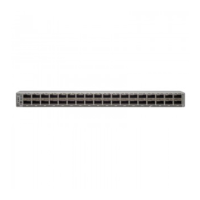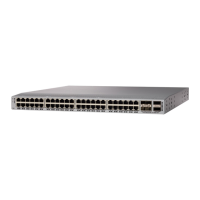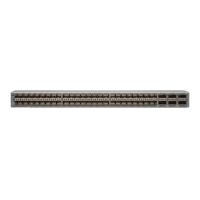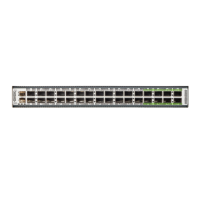Corrupted Bootflash Recovery
All device configurations reside in the internal bootflash. If you have a corrupted internal bootflash, you could
potentially lose your configuration. Be sure to save and back up your configuration files periodically. The
regular system boot goes through the following sequence:
1
The basic input/output system (BIOS) loads the loader.
2
The loader loads the nx-os image into RAM and starts the image.
3
The nx-os image reads the startup configuration file.
If the nx-os image on your system is corrupted and you cannot proceed (error state), you can interrupt the
system boot sequence and recover the image by entering the BIOS configuration utility described in the
following section. Access this utility only when needed to recover a corrupted internal disk.
The BIOS changes explained in this section are required only to recover a corrupted bootflash.Caution
Recovery procedures require the regular sequence to be interrupted. The internal sequence goes through three
phases between the time that you turn on the system and the time that the system prompt appears on your
terminal—BIOS, boot loader, and nx-os image. The following table describes the steps in the recovery
interruption process.
Table 2: Recovery Interruption
DescriptionRecovery Prompt
(appears when the
system cannot progress
to the next phase)
Normal Prompt
(appears at the end of
each phase)
Phase
The BIOS begins the power-on self test,
memory test, and other operating system
applications. While the test is in progress,
press Ctrl-C to enter the BIOS configuration
utility and use the netboot option.
No bootable deviceloader>BIOS
The boot loader uncompresses the loaded
software to boot an image using its filename
as a reference. The image is made available
through bootflash. When the memory test is
over, press Esc to enter the boot loader
prompt.
loader>Starting nx-osBoot loader
Cisco Nexus 9000 Series NX-OS Troubleshooting Guide, Release 7.x
15
Troubleshooting Installations, Upgrades, and Reboots
Corrupted Bootflash Recovery
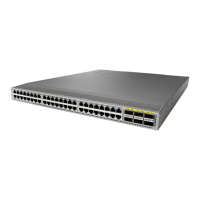
